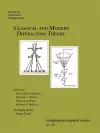
Classical and Modern Diffraction Theory
4 contributors - Paperback
£298.00
Tijmen Jan Moser received his Ph.D. from the University of Utrecht, concentrating on the shortest-path method for seismic ray tracing. He has worked as a geophysical consultant for a number of companies and institutes, including Amoco, Institut Français du Pétrole, Karlsruhe University, Bergen University, Statoil/Hydro, Geophysical Institute of Israel, Fugro-Jason, and Horizon Energy Partners. Moser was an Alexander-von-Humboldt stipendiat 1996– 1997. Since 2005, he has been working independently with SGS-Horizon, Seismik, and many other associations. Based in The Hague, The Netherlands, he is close to the former estate of Christiaan Huygens, whom he considers the greatest geophysicist of all time. Moser’s main interests include seismic imaging, asymptotic methods, seismic reservoir characterization, diffraction, and geothermal exploration. He has authored many influential papers on ray theory and ray methods, Born inversion and modeling, macro-model independent imaging, and diffraction imaging, several of which have received best paper awards, including an Honorary mention in 2005 from SEG and the Eötvös Award in 2007 and 2009 from EAGE. Moser has co-edited two reprint volumes for SEG, Classical and Modern Diffraction Theory and Seismic Diffraction, and teaches courses on diffraction for EAGE and SEG. He co-organizes the APSLIM (Active and Passive Seismics in Laterally Inhomogeneous Media) workshops in the Czech Republic (2015, 2021). He is a member of SEG and the Mathematical Association of America (MAA), an honorary member of EAGE, and Editor-in-Chief of Geophysical Prospecting.
Enders A. Robinson (1930 - December, 2022) was professor emeritus of geophysics at Columbia University in the Maurice Ewing and J. Lamar Worzel Chair. He received a B.S. in mathematics in 1950, an M.S. in economics in 1952, and a Ph.D. in geophysics in 1954, all from Massachusetts Institute of Technology. As a research assistant in the mathematics department at MIT in 1950, Robinson was assigned to seismic research. Paper-and-pencil mathematics on the analytic solution of differential equations was expected. Instead, Robinson digitized the seismic records and processed them on the MIT Whirlwind digital computer. The success of digital signal processing led to the formation of the MIT Geophysical Analysis Group in 1952 with Robinson as director. Almost the entire geophysical exploration industry participated in this digital enterprise. In fact, this effort later would be recognized in the Boston Globe newspaper, which published a special magazine (May 15, 2011) recognizing the 150 most valuable contributions MIT has made in science and technology– #32 was the Geophysical Analysis Group for spurring the “digital revolution” in oil prospecting. In 1965, Robinson and six colleagues formed Digicon, one of the first companies to do commercial digital seismic processing. In 1996, Digicon and Veritas combined to form VeritasDGC, which combined with CGG in 2007. With Sven Treitel, Robinson received the SEG award for best paper in GEOPHYSICS in 1964, the SEG Reginald Fessenden Award in 1969, and the Conrad Schlumberger Award from the European Association of Exploration Geophysicists (EAGE), also in 1969. In 1983, Robinson was made an honorary member of SEG. In 1984, he received the Donald G. Fink Prize Award from the Institute of Electrical and Electronic Engineers (IEEE). In 1988, he was elected to membership in the National Academy of Engineering. He received the SEG Maurice Ewing Medal and the SEG award for best paper in GEOPHYSICS in 2001, the Blaise Pascal Medal for Science and Technology from the European Academy of Sciences in 2003, and the Desiderius Erasmus Award from EAGE in 2010. Robinson is the author of 20 books and the co-author of 13.